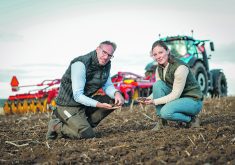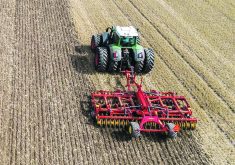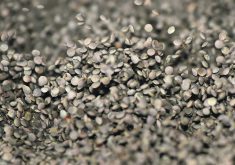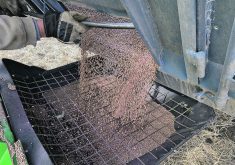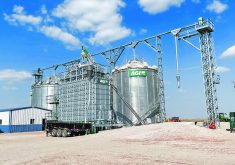FarmDroid remembers the exact location of every seed it plants to precisely guide its weeding knives later
I started a small custom spraying business in co-operation with Manitoba Pool Elevators in 1997. The standard marking system was the foam marker.
I’m not a good operator and have a hard time driving straight up and down the field. In the end we leased an Ag Navigator GPS with no autosteer. But with the lightbar I could go day and night and haven’t regretted being the first GPS custom sprayer in the area.
My little 1,200-acre farm lived longer than Manitoba Pool Elevators. We have 28 internal combustion engines with a total of 113 cylinders, including the one in the sailboat. It also has an all-electric car replacing my pickup for most tasks. Since 2016, about 20 percent of my farm has become organic, which brings its own challenges.
Now it’s 2022 and time to buy a 1.2 horsepower farm tractor / row crop planter/row crop cultivator that’s all electric and 100 percent solar powered?
There’s no steering wheel, seat or diesel tank. It’s probably the most boring tractor one could buy.
In Europe the unit is rated to plant and cultivate a total of 50 acres of sugar beets per day. In one day on my farm, I think I could squeeze 125 acres of organic hemp planting and cultivation out of it. At a top speed of 0.9 km-h it takes about one hour to plant one row on a quarter section.
The unit I’m most interested in is the FarmDroid FD20 out of Denmark. This is a row crop planter with adjustable row spacings and an overall working width of three metres (10 feet). Steering is controlled by cellular supported RTK GPS.
If we’re speaking about precision in our agricultural endeavors, the FarmDroid planting function remembers exactly where each seed is planted within the row and within the whole field.
After planting is done, FarmDroid converts into a row crop cultivator. Because the machine recalls precisely where it planted each seed, cultivation can be started even before the crop or weeds emerge. RTK GPS accuracy allows the knives to cut within 1.5 cm (0.5 inch) of the plant. It can cultivate 125 acres every 10 days without accidentally cutting any crop.
My 40-year old Elmer’s row crop cultivator can match that same accuracy even without GPS, as long as I drive between the rows. What FarmDroid can do that my Elmer’s can’t is cultivate within each row between the seeds that were planted 10 days earlier.
FarmDroid accomplishes this feat, which most people call “amazing,” without cameras, optical sensors or mechanical arm sensors. The location of each seed is logged into the GPS, giving the cultivator knives unprecedented accuracy and putting a new chapter in the book of precision agriculture.
As it moves between the rows, the in-row cultivator sweeps smoothly move left and right cutting weeds within the row. This achieves mechanical weed control within 1.5 cm of every plant.
The FarmDroid does have one sensor, a rain gauge to measure rainfall and stop cultivating when it gets too wet. In total there are 10 reasons the machine stops where a human needs to restart it. Sometimes it can be restarted from a distance with a mobile phone, other times the human may have to go to the field and manually restart it.
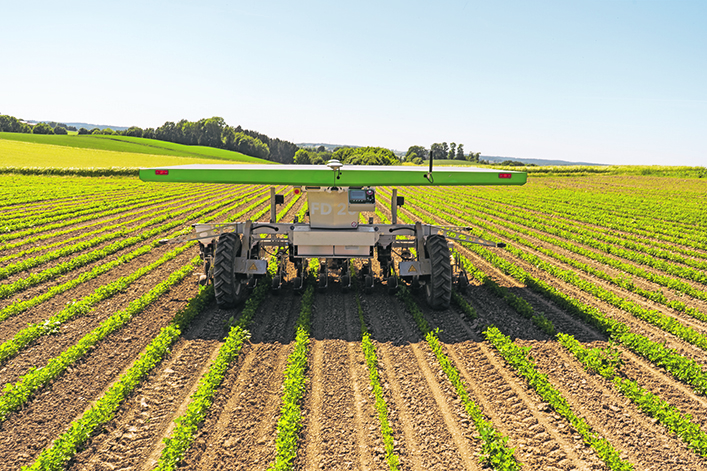
From my experience in 30 years of farming plus studies in university, I’ve learned how important it is to maintain the weed-free period before the crop creates competition against the weeds.
FarmDroid should be able to keep this period weed free until my hemp, organic corn, soybean, or maybe carrots or cabbage have established themselves. On my crop insurance contract, some of these crops have almost 10 times higher coverage than wheat or canola. Higher profits are interesting to me.
In the end, my little farm would still need 10 of these units to cover the whole operation. Maybe I’ll start with one unit and see if it’s a good or bad idea. Maybe the next one will be an improved version. Or maybe it will be the last of its kind on my farm. The thought of using no diesel up to the point of harvest is sort of cool? But then again, I never claimed that all my 113 cylinders were firing correctly.
John Gehrer is a farmer, agronomy consultant and small business co-owner. He expects the price tag for a FarmDroid to be about $150,000 when they become available.





